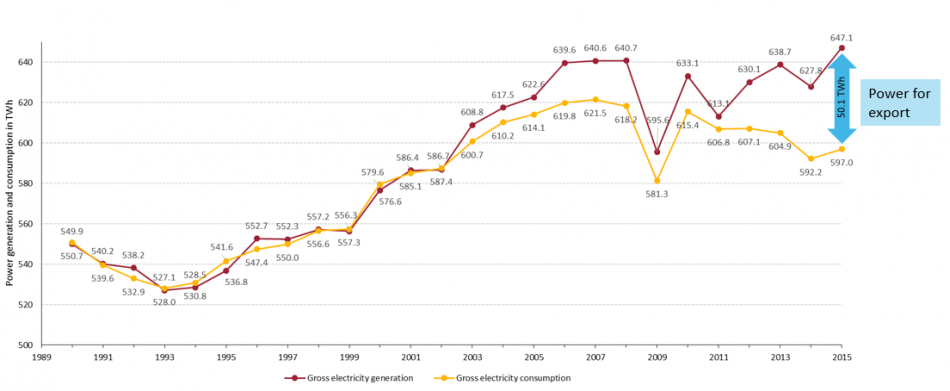Renewables surge pushes coal power exports to record high - think tank
Renewables' share of the country’s power consumption last year rose to 32.5 percent from 27.3 percent in 2014 – the largest percentage-point increase on record. The rapid increase was mainly due to the fact that wind turbines generated 50 percent more electricity than in 2014, according to the think tank’s 2015 review.
Despite the renewables surge, coal plants barely slowed production, leading to a record total power generation of 647 terrawatt-hours (TWh). In contrast, power consumption only went up slightly, according to Agora Energiewende*. This pushed up power exports by 50 percent to a record 60.9 TWh. Thus, almost a tenth of electricity generated in Germany last year was used in neighbouring countries.
“This shows that Germany has an oversupply of power – despite the shutdown of nuclear power plants,” said the institute’s director, Patrick Graichen, in a press release. “The flipside is that Germany is now exporting power produced by coal-fired plants, which renewable energies have made superfluous at home. The climate impact of Germany’s power system therefore hardly improved last year.”
Total German CO2 emissions, including other sectors like transport and heating, even went up slightly in 2015, mainly because lower temperatures raised demand for heating. Graichen warned the country would miss its climate targets without a clear strategy to decarbonise the power, heat, and transport sectors.
The government last year decided to mothball a number of old lignite power plants to keep the climate targets within reach, but even government advisors warn plans to reduce CO2 emissions by 40 percent by 2020 compared to 1990 levels will be hard to reach.
The government aims to pass a Climate Protection Plan 2050 in cabinet by mid-2016, which is meant to provide a "solid basis for decarbonising the economy," according to the environment ministry. Many climate activists and some government officials say it should contain details on how Germany will phase out coal, but industry representatives have called for the plan to be dropped. Environment minister Barbara Hendricks has said the country can exit lignite-fired power generation by 2040.
Wholesale power prices fell around ten percent to 3.16 cents per kWh in 2015, their lowest level in ten years, according to the review. As a result, gas-fired power stations cut production, as low prices for CO2 emissions certificates meant coal plants outcompeted them.
Renewables marked a further record on 23 August, when they covered up to 83.2 percent of German power consumption. The researchers said renewables’ share of total power production is set to increase further in 2016, partly because several large offshore wind parks started operation in 2015.
Regardless of the rising share of renewables in power production, new capacity added last year slowed significantly. Renewables association BEE has estimated onshore wind capacity was expanded by 3600 MW in 2015, compared to 4750 MW in 2014. Solar association BSW has said solar capacity grew by around 1400 MW, a drop of around 30 percent and clearly below government targets.
Find the Agora Energiewende press release in English here.
*Like the Clean Energy Wire, Agora Energiewende is a project funded by Stiftung Mercator and the European Climate Foundation.


